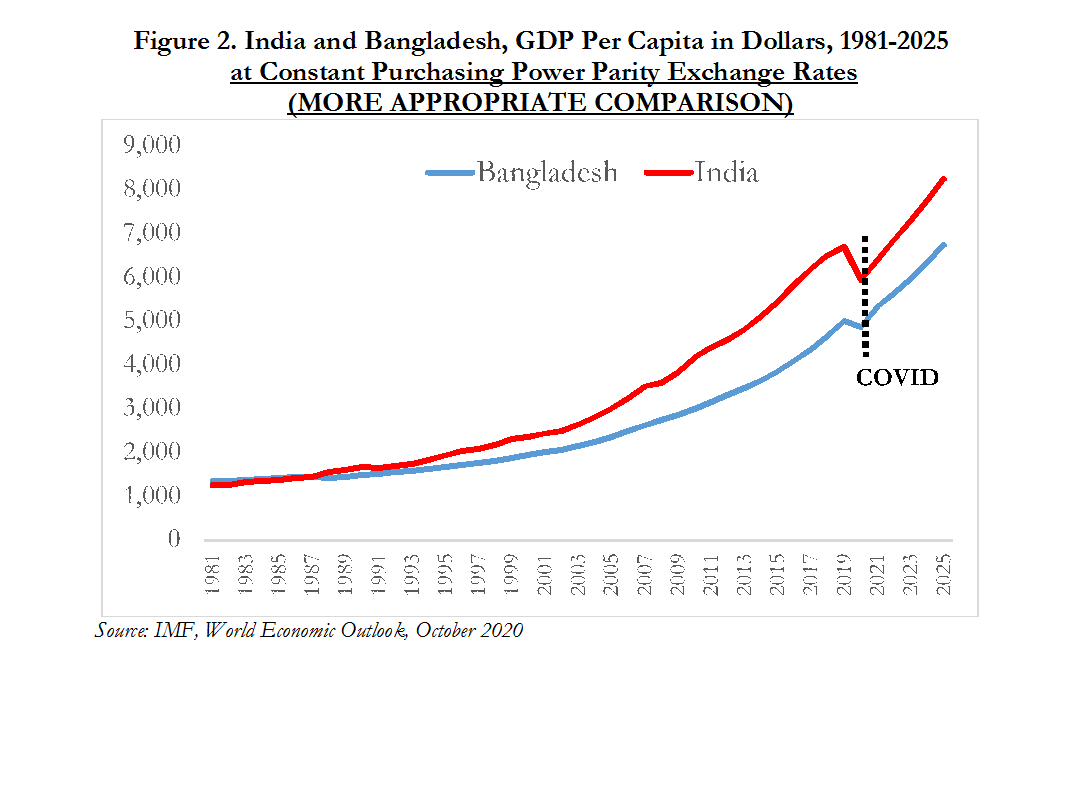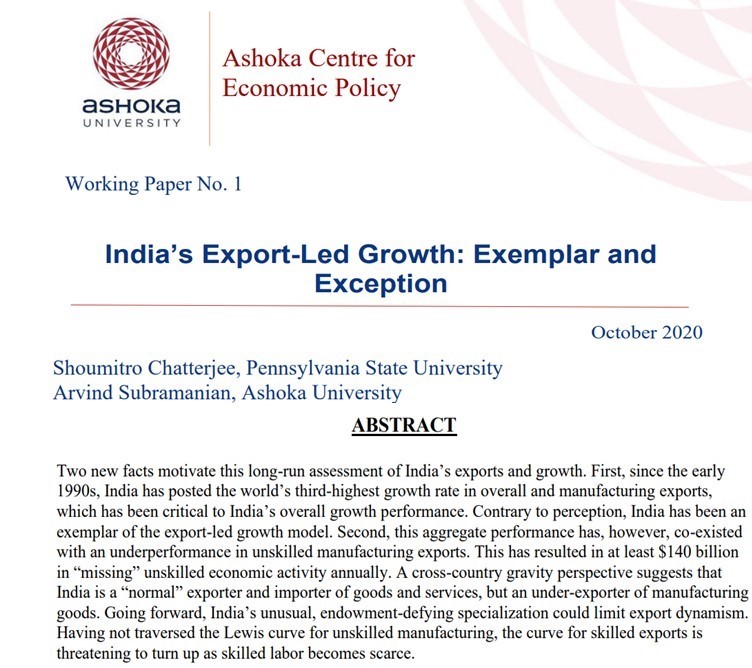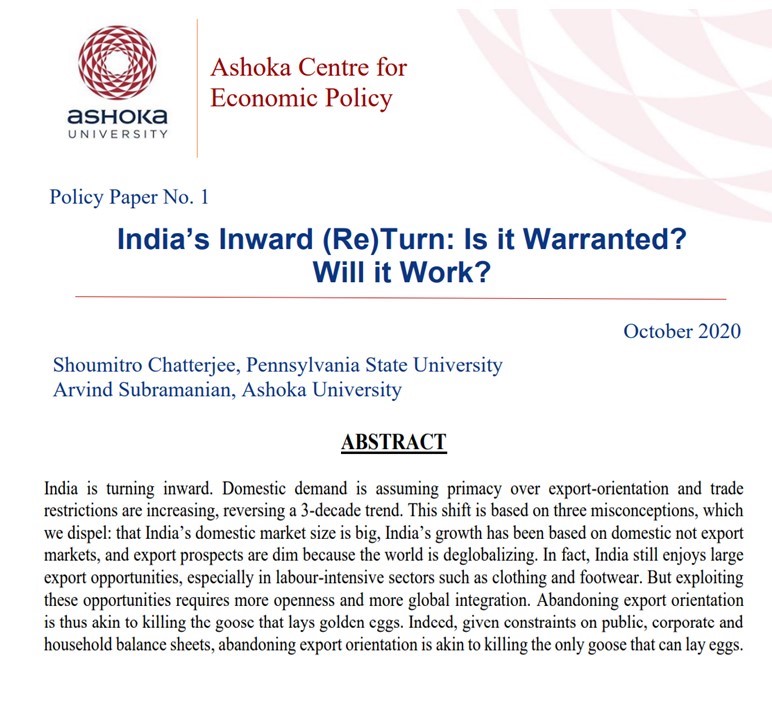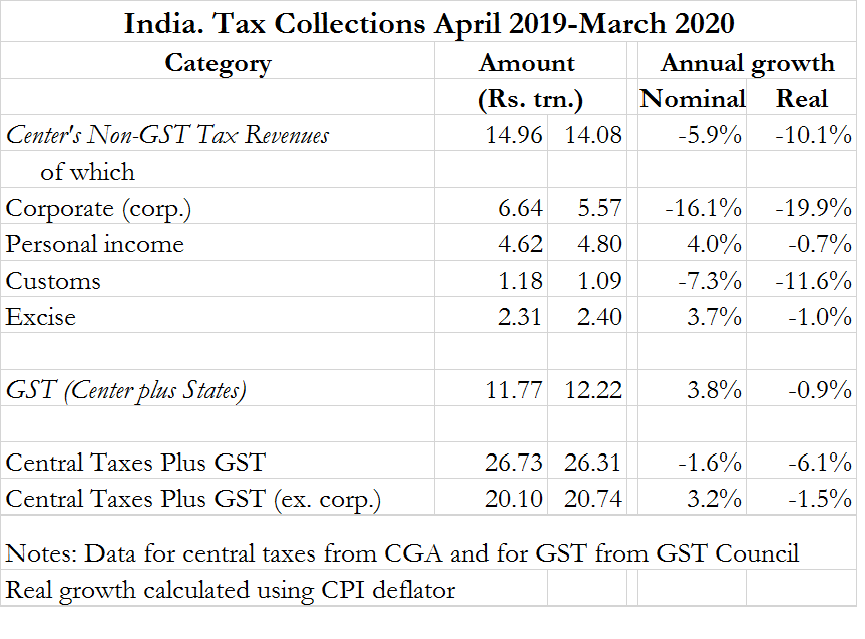
1/ India's macro-trade-development puzzle stemming from 2 surprising facts
new paper w/@shoumitro_c: ashoka.edu.in/static/doc_upl…
Puzzle
Post-1991, world's 3rd fastest manufacturing export growth (Fact 1)
despite
Massive under-exports of unskilled labor goods (Fact 2)

new paper w/@shoumitro_c: ashoka.edu.in/static/doc_upl…
Puzzle
Post-1991, world's 3rd fastest manufacturing export growth (Fact 1)
despite
Massive under-exports of unskilled labor goods (Fact 2)


2/ Fact 1
India considered inward-oriented economy & premature "deindustrializer: drodrik.scholar.harvard.edu/files/dani-rod…
But, for 3 decades, post-1991
Exports a key driver of growth
Not just services but manufacturing exports have grown rapidly (12% annual)
India an east Asian Tiger!
India considered inward-oriented economy & premature "deindustrializer: drodrik.scholar.harvard.edu/files/dani-rod…
But, for 3 decades, post-1991
Exports a key driver of growth
Not just services but manufacturing exports have grown rapidly (12% annual)
India an east Asian Tiger!
3/ Fact 2
That Indian economy services not manufacturing-based economy well known: pubs.aeaweb.org/doi/pdfplus/10…
But *magnitude* of defying comp. advantage striking: missing low-skill exports/production b/w $60-100 bn.
So too is duration. Under-performance several decades old

That Indian economy services not manufacturing-based economy well known: pubs.aeaweb.org/doi/pdfplus/10…
But *magnitude* of defying comp. advantage striking: missing low-skill exports/production b/w $60-100 bn.
So too is duration. Under-performance several decades old


4/ Under-performance in low-skill mfg. is reflected in smaller gains in global market share compared to high skill sectors
But question arises:
Is India then an under-exporter or over-exporter?
But question arises:
Is India then an under-exporter or over-exporter?

5/ Answering this question requires accounting for size of India & trading partners & market access. Gravity model sheds light
India under-exports in mfg. but not overall in long run
So, over-performance in high-skill has not compensated under-performance in low-skill mfg.

India under-exports in mfg. but not overall in long run
So, over-performance in high-skill has not compensated under-performance in low-skill mfg.


6/ Challenge from India's strange specialization
Skill intensity of manufacturing exports rising and
Services exports (also skill intensive) growth moderating, & gaining global market share at slower pace

Skill intensity of manufacturing exports rising and
Services exports (also skill intensive) growth moderating, & gaining global market share at slower pace


7/ The challenge expressed as "Tale of Two Arthur Lewis curves"
India, unlike China, has not taken advantage of Lewis Curve in unskilled mfg.
And Lewis Curve for skilled manufacturing & services is threatening to turn up because based on *scarce* endowment: skilled labour
India, unlike China, has not taken advantage of Lewis Curve in unskilled mfg.
And Lewis Curve for skilled manufacturing & services is threatening to turn up because based on *scarce* endowment: skilled labour
8/ Policy response for each of these "Lewis Curves"
Reclaim low-skill manufacturing especially in key sectors (clothing and footwear): ashoka.edu.in/static/doc_upl…
And keep expanding supply of skilled labour to maintain momentum of export growth through training & education
Reclaim low-skill manufacturing especially in key sectors (clothing and footwear): ashoka.edu.in/static/doc_upl…
And keep expanding supply of skilled labour to maintain momentum of export growth through training & education
9/ India's unique growth model: A Trilogy
1.Growth surge of 1980s well before 1991 reforms (w/ @rodrikdani) : citeseerx.ist.psu.edu/viewdoc/downlo…
2.Dynamism but lagging structural changes (w/ @rohlamba): pubs.aeaweb.org/doi/pdfplus/10…
3. Unusual export specialization: this paper w/ @shoumitro_c
1.Growth surge of 1980s well before 1991 reforms (w/ @rodrikdani) : citeseerx.ist.psu.edu/viewdoc/downlo…
2.Dynamism but lagging structural changes (w/ @rohlamba): pubs.aeaweb.org/doi/pdfplus/10…
3. Unusual export specialization: this paper w/ @shoumitro_c
• • •
Missing some Tweet in this thread? You can try to
force a refresh








